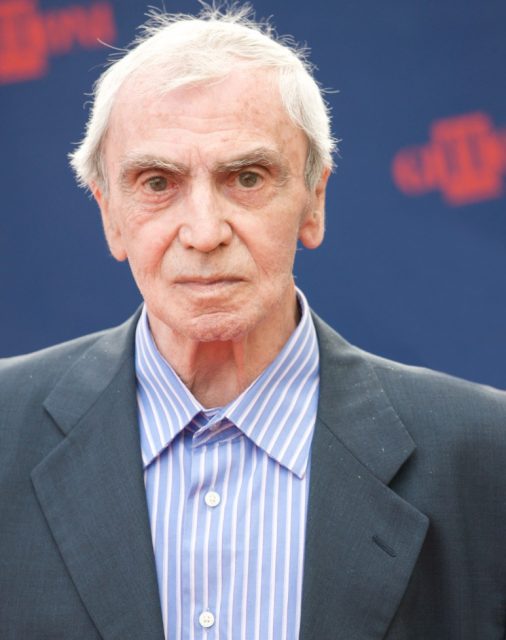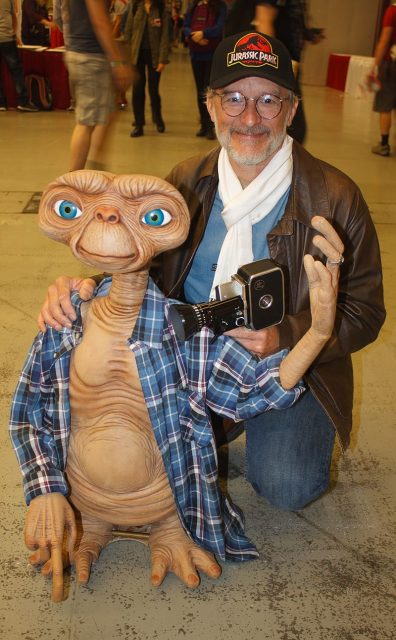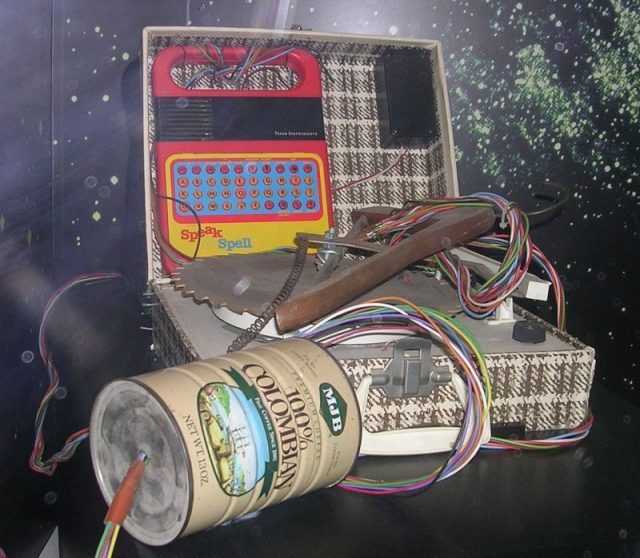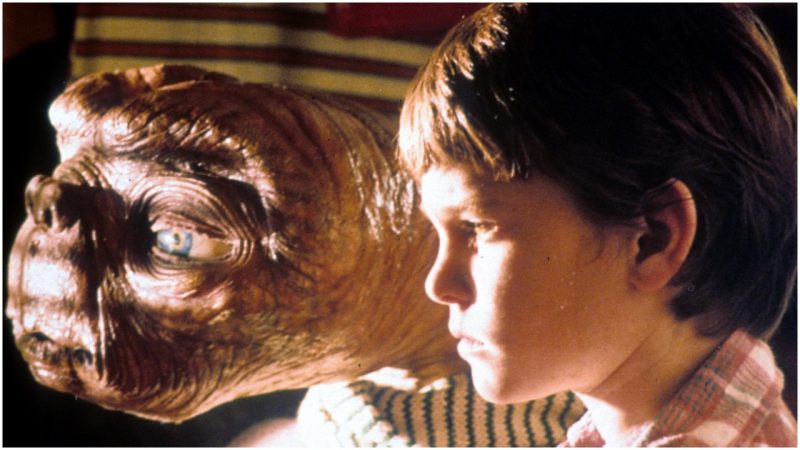Today CGI would make quick work of generating a three-foot-high, 10 million-year-old, gravelly-voiced extraterrestrial. But back in 1982, when Steven Spielberg filmed E.T. the Extra-Terrestrial, creating a credible on-screen alien befriended by a boy required three mechanical puppets, three actors—one of them a 12-year-old born without legs, a professional mime, and three voices, one of whom was a two-pack-a-day cigarette-smoking housewife.
Steven Spielberg tasked Carlo Rambaldi, an Academy Award-winning special effects artist, with fabricating E.T. It took Rambaldi’s team six months and $1.5 million to create three models: a mechanical E.T. operated by cables, an electronic one for facial movements, and a costume that the three actors wore for scenes in which the alien walked. (Rambaldi’s work garnered him an Academy Award for Visual Effects.)
The first person to wear the E.T. puppet costume was an actor Spielberg found through the UCLA Medical Center. Matthew De Meritt, a 12-year-old born without legs, charmed the cast and crew by speeding around the set on a skateboard. E.T.’s heavy radio-controlled head was placed on top of Matthew’s head, he looked out through slit’s in the 15-pound puppet’s chest, and he “walked” on his hands. Matthew was in the costume for the alien’s boozy scenes, where E.T. stumbles around the kitchen and falls on his face.

But the costume proved too cumbersome for the pre-teen, and two little people were called in for other walking scenes. Pat Bilon, a 24-year-old 2’10’’ former sheriff’s office dispatcher from Youngstown, Ohio, and Tamara De Treaux, a 22-year-old 2’7’’ actress. “Wearing E.T. was not comfortable; it was very warm inside,” Bilon told People magazine in 1982. Between scenes, the E.T. head was removed, and the actors were cooled off with blow dryers. “It was like a steam bath,” Bilon told People. “They got me aspirins for my back pain. I couldn’t stand up a long time.”
E.T.’s hand and arm movements were performed by a professional mime, Caprice Rothe, who would hide underneath a platform, stretching her arms up in full-length four-fingered gloves to do things like pick watermelon seeds out of E.T.’s teeth. Her first day on set, a nervous Rothe had drunk too much coffee, causing her hand to shake when she placed it on young Elliott’s shoulder. Spielberg kept the take, saying the tremble nicely suggested E.T.’s shyness.

As for E.T.’s famous raspy voice, during the early shooting, Spielberg himself read the lines off camera—like “E.T. phone home”—intending to dub in a “real” voice for the final print. Rising star Debra Winger, who’d recently completed An Officer and a Gentleman, auditioned for the voice part, and some of her breathing was indeed used in the film. But the voice that finally read all of the lines was a cigarette smoker in her mid-60s.
Sound designer Ben Burtt was in a camera store in Marin County when he heard Pat Welsh speaking to a salesperson. He asked if she’d always had such a low voice and invited her in to audition. He thought her voice was perfect for the part.
“Pat Welsh has a low-pitch resonant voice,” Ben Burtt told Vincent LoBrutto in the book Sound-on-Film: Interviews with Creators of Film Sound. “What worked for E.T. was you couldn’t tell whether the voice was young or old, male or female. Pat’s voice was delivered in a kind of monotone, slowed down a little bit and slightly treated electronically.”

Welsh spent nine and a half hours taping E.T.’s lines, for which she was paid $380. Apparently, she didn’t mind the relatively low pay. As People magazine reported, she bought a vanity license plate for her car that read: I LOVE ET. Pat Welsh died in 1995, at age 79.
E.T. was an immediate critical and Spielberg’s biggest commercial success. It surpassed Star Wars in box office sales, and today is number 4 on all-time best box office lists, adjusted for inflation.
Spielberg was so adamant that the cast and crew treat E.T. as a “real” creature during filming that he had Drew Barrymore, then 6, convinced that the alien was real. When E.T. “died” in a pivotal scene, young Drew burst into real sobs, which of course Spielberg filmed and which you can still see in E.T. today, along with Welsh rasping, “I’ll always be… right … here.”
